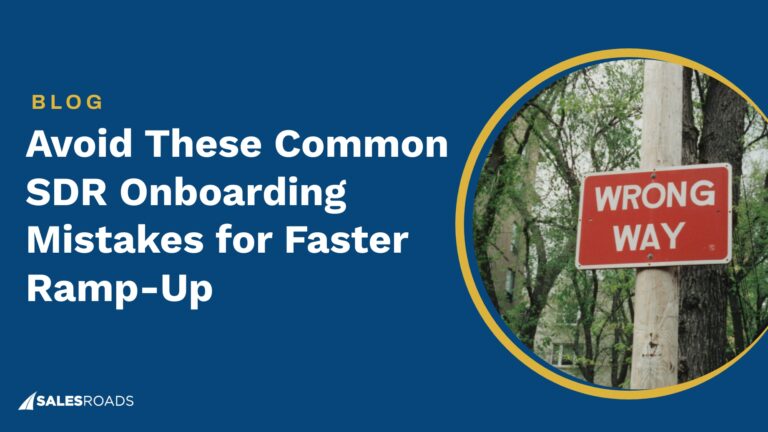If sales meetings feel more like a punishment than a strategic session, you’re not alone. Many sales meetings suffer from a lack of focus and direction, leaving the team feeling disengaged and uninspired.
Imagine a different reality: a sales meeting where everyone is dialed in, actively contributing ideas, and excited about the week ahead. This isn’t a fantasy – it’s the power of a well-crafted sales meeting agenda.
What Is a Sales Meeting Agenda?
A sales meeting agenda is a roadmap that outlines the key topics, discussions, and action items planned for a sales team meeting. It serves as a communication tool for all participants, ensuring everyone arrives prepared and the meeting stays on track. This can come in the form of a simple bulleted list or a more detailed document with specific time allocations for each agenda item.
Why a Structured Sales Meeting Agenda is Important
While a casual sales meeting might seem productive at the moment, the lack of structure can lead to wasted time and missed opportunities. A well-defined sales meeting agenda offers several key benefits:
Improved Focus and Efficiency
A structured agenda ensures the meeting stays on target, preventing discussions from going off on tangents. By allocating specific time slots for each topic, you can guarantee all essential points are covered without exceeding the allotted meeting time. This focused approach keeps everyone engaged and maximizes the value of the meeting.
Enhanced Team Collaboration
An effective sales meeting agenda fosters collaboration within the team. When everyone is aware of the agenda beforehand, they can come prepared to contribute their insights and experiences. The agenda also facilitates open discussions, allowing team members to share best practices, address challenges collectively, and brainstorm solutions.
Clear Objectives and Outcomes
A well-crafted sales meeting agenda establishes clear objectives and desired outcomes for the session. By outlining these goals upfront, the team can work towards achieving specific results. This clarity helps ensure everyone is on the same page, fostering a sense of purpose and direction for the meeting.
By incorporating a structured sales meeting agenda, B2B professionals and sales reps can significantly enhance the effectiveness of their team meetings. The improved focus, collaboration, and clarity provided by an agenda ultimately lead to a more productive and successful sales team.
Essential Components of a Sales Meeting Agenda
A strong sales meeting agenda is the foundation for a productive and goal-oriented team session. By incorporating these key components, you can ensure your sales meetings are informative, collaborative, and drive results.
Welcome and Opening Remarks
Kick off your sales meeting on a positive note. Briefly introduce any new attendees and remind everyone of the meeting’s purpose, referencing your pre-distributed sales meeting agenda. Acknowledge any achievements or milestones from the previous week to celebrate successes and boost team morale.
Setting a positive and energetic tone from the outset helps keep everyone engaged and motivated throughout the session.
Review of Previous Meeting Notes
Before diving into new topics, ensure everyone is on the same page. Briefly review the key action items and decisions from the prior sales team meeting agenda. Identify any outstanding tasks or areas that require follow-up to hold team members accountable.
This quick recap ensures everyone is caught up to speed and ready to move forward with the current agenda.
Sales Metrics and Performance Analysis
Numbers tell a powerful story. Dedicate some time in your agenda to reviewing relevant sales metrics like conversion rates, lead generation, and revenue growth. Analyze this data against established goals to see how your team is tracking. Use these data-driven insights to inform future sales strategies and make adjustments where necessary.
By understanding your team’s performance through sales metrics analysis, you can identify areas for improvement and refine your overall sales strategy.
Customer Updates and Feedback
Your customers are the lifeblood of your business. During your sales meeting, dedicate time to discussing recent customer interactions. Share success stories and discuss any challenges your team encountered. Analyze customer feedback to gain valuable insights into market needs and preferences.
By understanding your customers better, sales development reps can identify opportunities for upselling, cross-selling, or improving customer satisfaction, ultimately strengthening your customer relationships.
Pipeline Review and Forecast
An accurate sales forecast is essential for strategic planning. In your meeting agenda, include a section to review the current sales pipeline. Focus on qualified leads and potential deals, discussing the stage of each opportunity and estimated closing timelines.
Through collaborative analysis, you can develop a realistic sales forecast based on your pipeline. This forecast helps set attainable goals and measure progress toward achieving them.
Sales Strategies and Tactics
The sales landscape is constantly evolving. To stay ahead of the curve, your sales meeting agenda should include time to brainstorm and discuss new sales strategies and tactics. Encourage your team to share best practices and successful sales approaches to foster knowledge sharing and collaboration. By continuously refining your messaging and optimizing your sales process, you can equip your team to excel in a competitive environment.
A strong sales agenda should incorporate time to discuss these strategies and tactics to ensure your team has the tools they need to succeed.
Training and Development
Your sales team is your greatest asset. Investing in their ongoing training and development is crucial for long-term success. Dedicate a portion of your meeting agenda to providing opportunities for your team to learn and grow. This could involve product updates, training on new sales tools, or skill-building sessions.
By equipping your team with the knowledge and capabilities they need, you can enhance their sales effectiveness and empower them to achieve top performance.
Action Items and Next Steps
A successful meeting translates into actionable steps. Before concluding your sales meeting, clearly define action items for each team member or small group. Ensure each action item has a designated owner and a specific deadline. Take the time to review these action items with your team and confirm everyone understands their assigned tasks and responsibilities.
This fosters accountability and ensures everyone is aligned on the next steps to move forward with a clear sales meeting agenda template.
Q&A Session
An open and collaborative environment is essential for a thriving sales team. Dedicate time in your agenda for an open Q&A session. This allows team members to address any lingering concerns or ask clarifying questions. Encourage active participation and knowledge sharing within the team.
By fostering a space for open communication, you can create a learning environment where team members can learn from each other’s experiences and continuously improve their sales skills.
Closing Remarks and Adjournment
To conclude your sales meeting on a positive note, take a few minutes for closing remarks. Briefly summarize the key takeaways and action items discussed throughout the session. Thank your team for their participation and contributions. Leave them feeling motivated and energized to implement the strategies discussed. Finally, formally adjourn the meeting, allowing everyone to move on to their next tasks.
Tips for Running an Effective Sales Meeting
Sales meetings are a crucial element for driving team performance and achieving sales goals. However, poorly planned or executed meetings can be a waste of valuable time.
Before diving into the tips below, check David Kreiger’s non-negotiable rules for a productive meeting:
Ensure your sales meetings are effective, engaging, and deliver real results by incorporating the tips below:
Set Clear Objectives
The foundation of any successful meeting is a well-defined objective. Before crafting your sales meeting agenda, establish a clear purpose for the session. Are you reviewing sales metrics, brainstorming new sales strategies, or discussing customer feedback? A clear objective keeps your meeting focused and ensures everyone is on the same page about the desired outcome.
Encourage Participation
A successful sales meeting isn’t a lecture. Foster an environment that encourages active participation from all team members. This could involve incorporating brainstorming sessions, group discussions, or breakout groups to tackle specific challenges. By allowing everyone to contribute their ideas and experiences, you can leverage the collective knowledge of your team and generate valuable insights.
Stay on Track
Time is a precious commodity, especially in sales. To maximize the effectiveness of your meeting, it’s vital to stay on track with your agenda. Allocate specific time slots for each discussion topic and utilize tools like timers to keep the meeting moving forward. A well-structured agenda ensures all essential points are covered without exceeding the allotted time.
Follow Up
Don’t let the momentum die after the meeting ends. Following up is crucial to ensure accountability and track progress on action items. Distribute a clear sales meeting agenda outlining the key decisions, action items, and assigned owners with deadlines. Consider sending a follow-up email summarizing the key takeaways and next steps to solidify everyone’s understanding.
Prepare in Advance
Preparation is key to a productive sales meeting. Don’t expect to “wing it” and achieve optimal results. Invest time beforehand to prepare all necessary materials, including relevant sales data, customer feedback reports, or presentation slides. This level of preparation demonstrates professionalism and allows you to lead the meeting with confidence.
Utilize Technology
Technology can be a powerful tool to enhance your sales meetings. Utilize online collaboration platforms to share documents, and presentations, or conduct polls in real time. Consider video conferencing tools to connect with remote team members and facilitate interactive discussions. The right technological tools can streamline your meeting process and improve overall engagement.
Keep it Engaging
A sales meeting doesn’t have to be a monotonous lecture. Incorporate elements to keep your team engaged and motivated throughout the session. This could involve interactive activities, gamification elements, or inviting guest speakers to share their industry expertise. By keeping the meeting format dynamic and avoiding long lectures, you can ensure your team retains key information and remains actively involved.
Evaluate and Improve
Don’t settle for the status quo. Continuously strive to improve your sales meeting strategy by incorporating feedback and evaluation. After each meeting, consider soliciting feedback from your team members. Ask them about the meeting’s effectiveness, what elements worked well, and any areas for improvement. By actively seeking feedback and adapting your approach, you can ensure your sales meetings become increasingly effective over time.
Sales Meeting Agenda Templates
Here, we’ll explore various sales meeting agenda templates to suit different needs:
Weekly Sales Team Meeting
These frequent meetings provide a platform for ongoing communication, performance tracking, and team motivation.
- Welcome and Announcements (5 minutes)
- Briefly introduce any new team members or updates.
- Recognize top performers and celebrate recent wins.
- Sales Pipeline Review (10 minutes)
- Discuss the health of the sales pipeline, focusing on qualified leads and potential deals.
- Analyze the stage of each opportunity and estimated closing timelines.
- Sales Performance Analysis (10 minutes)
- Review key metrics like conversion rates, lead generation, and revenue growth against established goals.
- Identify areas for improvement and strategize adjustments.
- Challenges and Solutions (15 minutes)
- Facilitate a discussion where team members can share challenges they’re facing with prospects or deals.
- Encourage collaborative brainstorming to identify solutions and best practices.
- Training and Development (10 minutes)
- Dedicate a short segment to ongoing learning. This could involve product updates, new sales tools, or skill-building exercises.
- Action Items and Next Steps (5 minutes)
- Clearly define action items for each team member or small group, ensuring ownership and deadlines.
- Briefly review these action items to solidify everyone’s understanding.
Sales Strategy Planning Meeting
These periodic meetings focus on developing or refining your overall sales strategy to stay ahead of the curve.
- Welcome and Agenda Review (5 minutes)
- Briefly introduce the meeting’s purpose and key objectives.
- Review the agenda to ensure everyone is aware of the topics to be covered.
- Market Trends and Competitor Analysis (15 minutes)
- Discuss current market trends and how they might impact your sales approach.
- Analyze competitor activity and identify any opportunities or challenges they present.
- Brainstorming New Sales Strategies (20 minutes)
- Encourage team members to brainstorm new and innovative sales strategies.
- This could involve exploring new marketing channels, messaging adjustments, or refined sales processes.
- Evaluation and Prioritization (20 minutes)
- As a team, evaluate the various sales strategies brainstormed.
- Prioritize the most promising strategies based on feasibility, potential impact, and alignment with overall goals.
- Action Items and Resource Allocation (10 minutes)
- Define clear action items for implementing the prioritized sales strategies.
- Allocate necessary resources, such as budget or training, to support successful execution.
Sales Review and Feedback Meeting
These meetings provide an opportunity to review individual and team performance, offering valuable insights and fostering continuous improvement.
- Welcome and Introductions (5 minutes)
- Briefly welcome everyone and introduce any new participants.
- Set a positive and constructive tone for the review session.
- Individual Performance Review (20 minutes per rep)
- Conduct individual performance reviews with each sales rep, focusing on:
- Key performance indicators (KPIs) achieved or missed.
- Recent sales wins and challenges encountered.
- Opportunities for improvement and development.
- Conduct individual performance reviews with each sales rep, focusing on:
- Team Feedback and Discussion (15 minutes)
- Facilitate a group discussion where team members can share feedback with each other.
- Encourage constructive criticism, best practice sharing, and collaborative problem-solving.
- Goal Setting and Development Plans (15 minutes)
- Based on the review, establish revised or renewed goals for individual reps and the team as a whole.
- Develop personalized development plans to address identified areas for improvement.
- Action Items and Follow-up (5 minutes)
- Clearly define action items for each rep or team regarding development goals.
- Establish a timeline for follow-up meetings to track progress and provide ongoing support.
By utilizing these sales meeting agenda templates as a foundation, you can tailor them to fit the specific needs of your team and meet objectives. Remember, a well-structured sales agenda is key to conducting productive and impactful meetings that drive sales success.
Bottom Line
A well-crafted sales agenda is key to keeping your team on the same page, motivated, and ultimately, exceeding sales goals. From setting clear objectives and fostering participation to following up on action items, you can transform your sales meetings from a necessary evil into a strategic advantage.
Don’t underestimate the power of the sales meeting agenda – it can be your secret weapon for achieving consistent sales wins and propelling your team to new heights.











